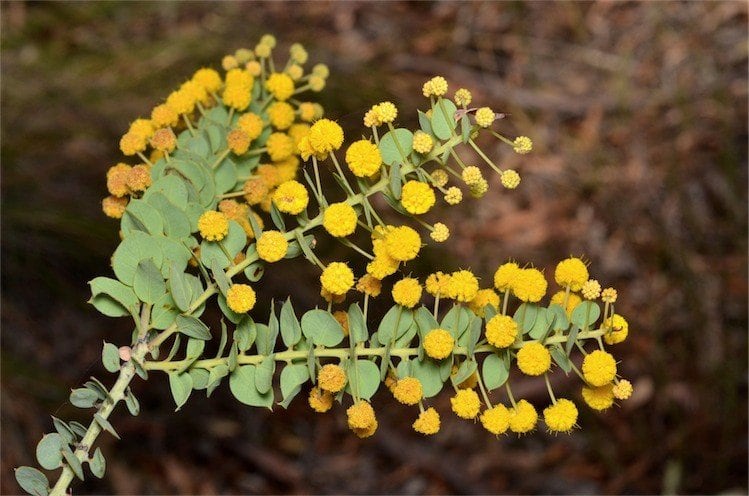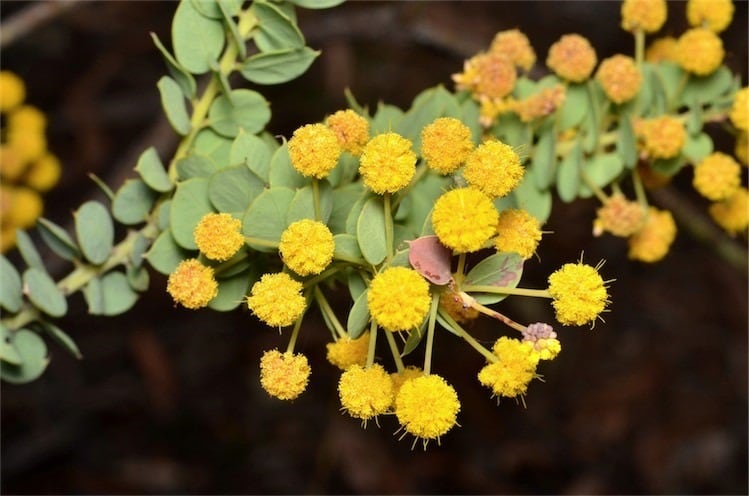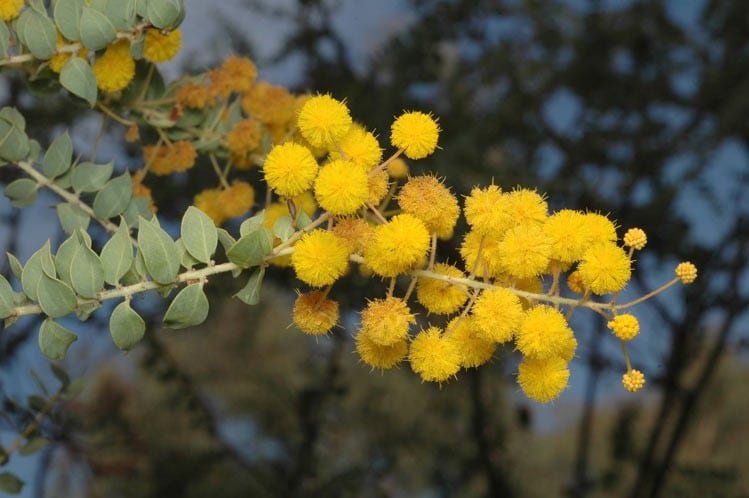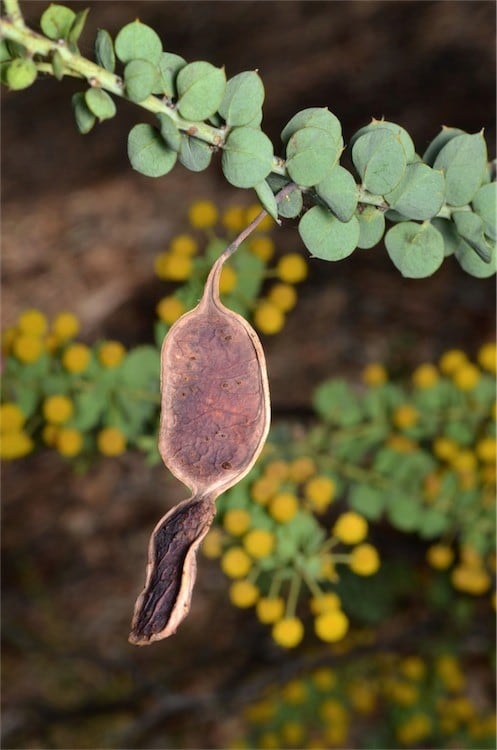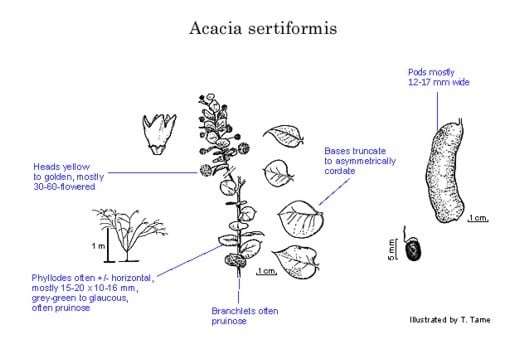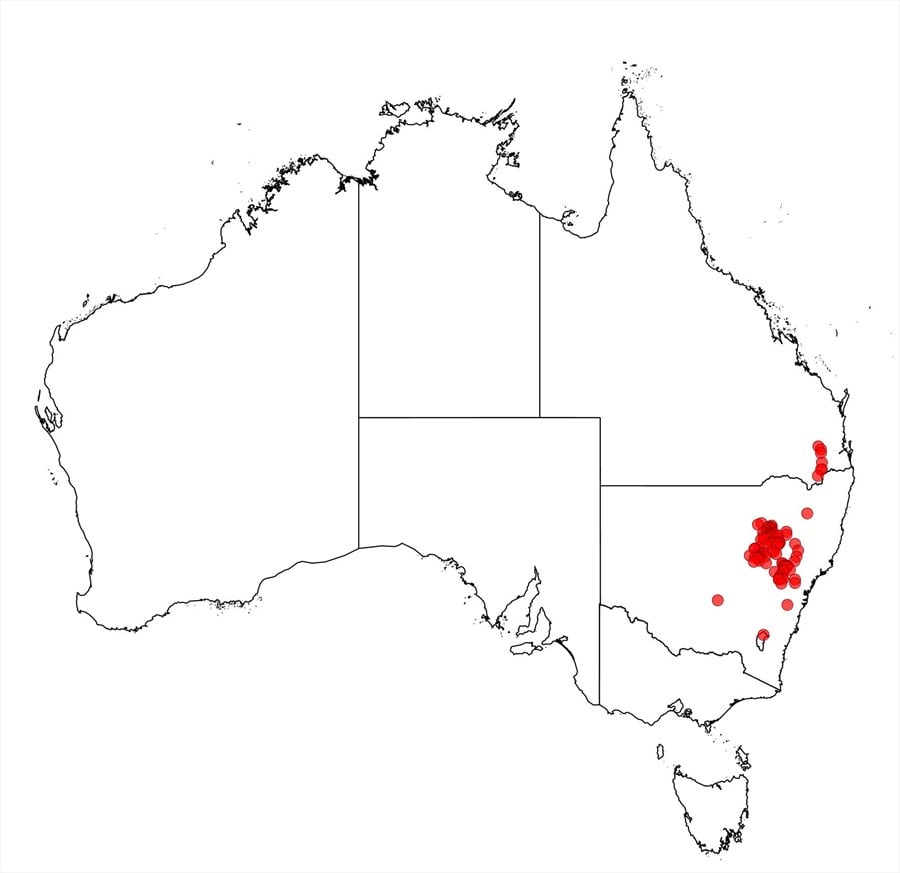Acacia sertiformis A.Cunn.
WATTLE
Acacias of Australia
Family
Fabaceae
Distribution
Occurring in eastern Australia from Barakula, Wallangarra, Warwick and Goombungee, Qld, and then from the southern end of the Pilliga scrub to Goulburn River valley and to north of Dubbo, N.S.W.
Description
Open sparsely branched shrub to 2 m high; branches arching downwards. Branchlets pruinose, sparsely or occasionally moderately hairy, rarely glabrous. Phyllodes widely spreading and rotated (20°–) 45°–90° from plane of branchlet, frequently convex, normally broadly elliptic to orbicular, (10–) 15–20 (– 25) mm long, (9–) 10–16 (–22) mm wide, l:w = (0.9–) 1.2 (–1.5), dull, grey-green and usually glaucous, usually glabrous except for hairs on pulvinus, margin and midrib, sometimes sparsely hairy on lamina; base asymmetrical and obliquely truncate or cordate; margin undulate; apex obtuse and obliquely uncinate at apex; gland mostly 0–3 mm above pulvinus. Inflorescences with normally patent peduncles, (8–) 12–16 (–20) mm long, sparsely pilose, occasionally glabrous; heads 9–10 (–11) mm diam., (25–) 30–60 (–75)-flowered, yellow to deep yellow. Corolla normally glabrous. Pods broadly oblong, straight or curved, 30–70 mm long, 12–17 (–20) mm wide, firmly coriaceous, normally pruinose; margin flat to undulate.
Habitat
Usually in Eucalyptus and Callitris woodlands on stony sandy loam soils.
Specimens
Qld: 400 m along Mt Janet Rd, W of Baupaume, A.R.Bean 5871 & P.I.Forster (BRI). N.S.W.: Yass, without date, W.W.Froggatt s.n. (NSW371124); 5.5 km S of Putty, T.M.Tame 700 (NSW); N of Coonabarabran, T.M.Tame 2421 (NSW); 0.5 km along Mt Vincent Rd, 1 km S of Ilford, T.M.Tame 3987 (NSW).
Notes
The glaucous branches, together with the grey-green glaucous phyllodes that have obliquely truncate to shallowly cordate bases, readily distinguish this species from the other species of the ‘A. uncinata group’. Characteristically, the habit is a few-branched, open, single-stemmed shrub with long arching branches and many, large, deep yellow flowers inserted along branchlets. Plants in the southern end of the distribution, from Ilford to Baerami and south to the Mellong Ra. and some Queensland specimens are clothed with sparse, long hairs (to 2 mm), and the phyllodes have a hirsute mucro to more than 2 mm long. The northern N.S.W. populations have phyllodes with smaller mucros (less than 2 mm long) and the hairs are much shorter. The young phyllodes are densely pubescent with grey to pale fawn-coloured hairs, becoming glabrous when mature. Some specimens suggest that hybridisation may occur between this species and A. piligera, particularly in the Lees Pinch area.
FOA Reference
Data derived from Flora of Australia Volumes 11A (2001), 11B (2001) and 12 (1998), products of ABRS, ©Commonwealth of Australia
Author
B.J.Conn, T.M.Tame
Minor edits by B.R.Maslin & J.Rogers
This identification key and fact sheets are available as a mobile application:
URL: https://apps.lucidcentral.org/wattle/
© Copyright 2018. All rights reserved.
